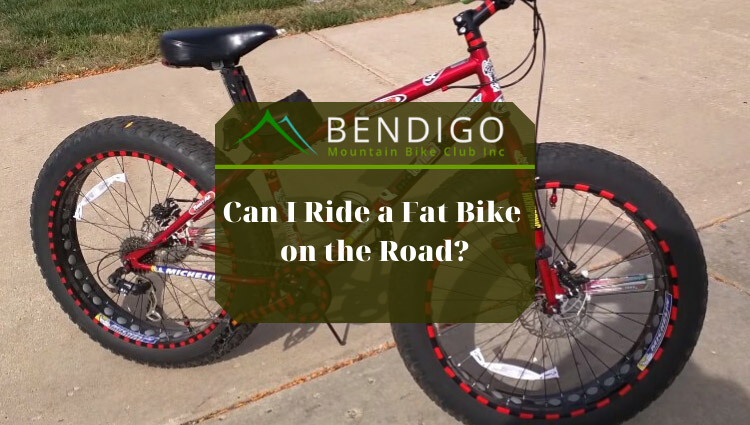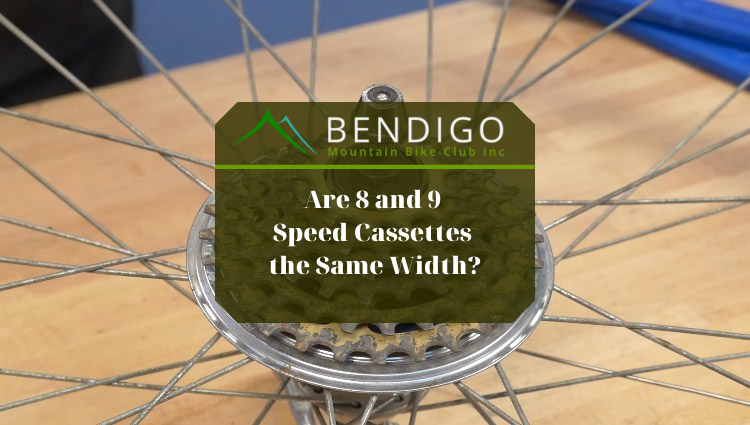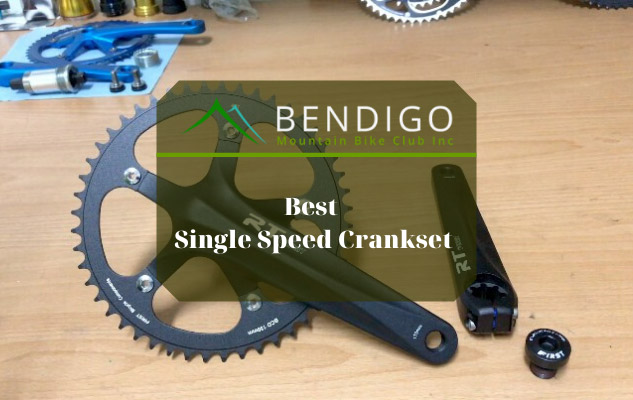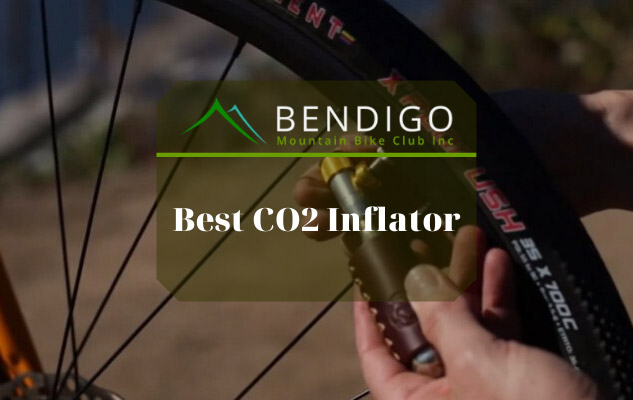Author Archives: dungvl
- Home → Author's archive:
Can I Ride a Fat Bike on the Road?
But can you use a fat bike on the road as well? Here’s the answer.
If you’re interested in getting a fat bike, you’ll feel glad to know that they offer more than meets the eye. As a cyclist, taking a closer look at these bikes helps you discover that they are very versatile and they offer a soft, enjoyable riding experience. This makes fat bikes the best all-around bicycle for your needs.
What is a fat bike?
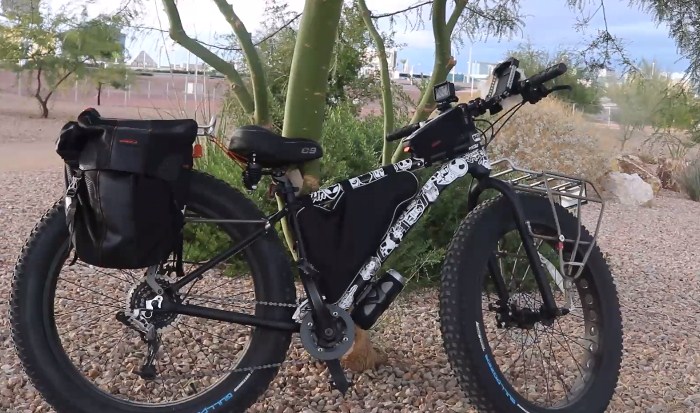
As the name suggests, fat bikes are exactly what they are – a bike with fat tires. The first glance of this can often feel astonishing as they have the appearance of an enlarged kid’s bike to allow for adult use. Another way of describing it is like a bike with tires made of huge, black-colored marshmallows.
Despite their unconventional appearance, fat bikes are here to stay. These bikes have been around for about ten years and since they came out, their popularity has been steadily increasing.
What makes fat bikes so great?
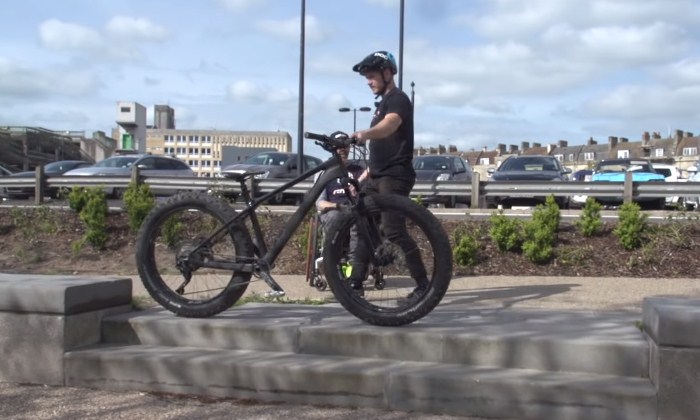
There are several great advantages with fat-tire bikes and these have contributed to their popularity. Perhaps the most obvious of these is its versatility in handling different kinds of terrain. The bike performs well in winter weather when the roads are completely paved with snow.
Aside from this, fat bikes also perform easily in mud, mountain trails, and sand. Versatility is the name of the game for this bike as it can travel on any terrain and condition – through snow, rain, ice, obstacles, rough trails, mud, and bogs. The fat tires can handle all of these challenges.
Another great advantage is that fat bikes offer a comfortable ride. Even when taken through rough terrains, it feels like a dream. It’s like a combination of a tank’s traction and a pillow’s comfort. This is because of the soft tires absorb virtually all of the bumps on the road, thus, leaving you with a riding experience that’s insanely smooth.
When riding on rough trails, the bike can also increase your skill capacity. Many bikers can’t handle challenging trails because, with traditional cycling, any obstacle or rock can throw them off their bikes. This, in turn, may lead to possible injuries and disasters.
But with the traction afforded by fat-tire bikes, you won’t have to worry about challenging trails, unseen rocks or obstacles that can throw you off your bike’s frame as the tires can effortlessly glide over these issues.
Can you ride your fat bike on the road?
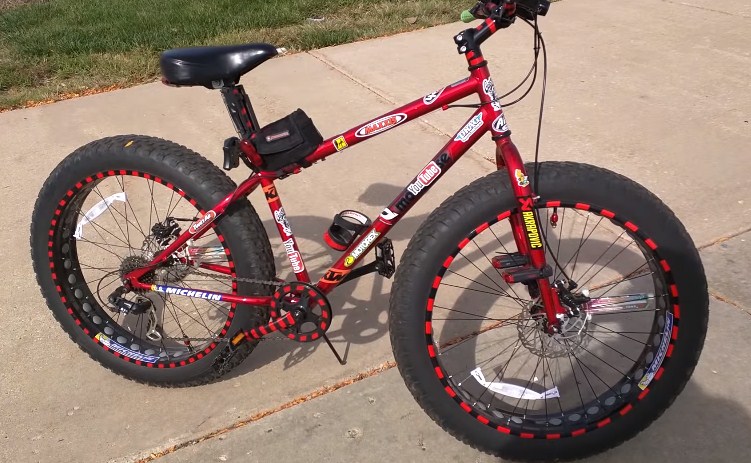
If you can use a fat bike on rough conditions and terrains, of course, you can also ride this bike on roads, although it won’t perform as well as bikes designed specifically for such surfaces. Surprisingly, a lot of cyclists find it easier to hop on their fat bike and ride around their neighborhood comfortably.
One primary reason why fat bikes have become more popular for pavement use is that for some owners, it’s the only bike they have. Rather than investing in a bicycle that can handle only one or two types of terrains, they’d rather have one that can perform on all types. Again, versatility comes into play.
While you can ride your fat bike on the road during sunny days in summer, you can also use the same bike when the snow falls on the streets. If you have the money to invest in several kinds of bikes for various terrains, that’s fine. But if one fat bike can handle all these types of terrain, why spend more?
Fat bikes are very practical, especially when you’re not sure what to expect when your journey starts in the morning. It may be very bright and sunny in the morning only to start raining late in the day. The fat bike can easily handle these changes in weather conditions.
With a fat bike, you’re guaranteed that you won’t miss a step on your way back home. For instance, you can have a snowstorm happening in the middle of winter. No one in their right mind would dare navigate snowy roads with a mountain bike – but with a fat bike, it’s no problem at all.
It won’t be as fast as other types of bikes on the road
While you can ride a fat bike on the road, it won’t perform as well as a skinny-tire bike with high air pressure, specifically on clean surfaces with ideal weather conditions. The reason, of course, is that fat bike tires are significantly heavier and wider.
Moreover, the bike itself isn’t specifically designed for speed. Using an analogy, you can compare the fat bike to a jeep that you can use to ride over different terrains whereas a road bike is a race car that’s only meant for smooth pavements.
Since the tires of fat bikes are a lot heavier and wider too, they have a stronger grip on the road, thus, causing more rolling resistance and friction. If you’re an experienced fat bike rider, you may have the ability to keep up with a beginner cyclist on a road bike, but not if you have equal skill levels.
For a fat bike, it’s just too much of a difference to overcome. If you want frequently ride on pavements and you need speed, you have the option to switch from fat-tire bike to something designed for this task.
Some bikers would buy an inexpensive mountain bike to use for the summer months then go back to your fat bike for the winter. This may not be very convenient for many but it’s a little less expensive than investing in a high-priced bike.
The bottom line
Now that the fat bikes are more popular than ever, the advancements in their technology have made them even more accessible. As the tires on these bikes get wider, the frames are also getting lighter rather than gaining more weight along with the growing tire size. Because of their growing popularity, you can now see fat bikes online and in bike shops.
Manufacturers are now more determined to mass-produce them as the profitability factor is enough to make them invest in the infrastructure. As a consequence, the prices for the fat-tire bikes have dramatically decreased. Now that you know that a fat bike can get you anywhere – on any terrain and in any weather condition – perhaps it’s time to invest in one.
Can You Use Clipless Shoes on Flat Pedals?
Once you select a bicycle that’s suitable for your needs, choosing the right shoes will make a big difference to your riding experience. Your feet help you to build up speed, navigate obstacles and give you control of your ride. This is why wearing the right shoes is so important.
Manufacturers carefully design shoes for particular riding experiences and types of bicycles. They need to be comfortable to wear and yet effective in making every stroke of the pedals effective.
Flat pedal shoes
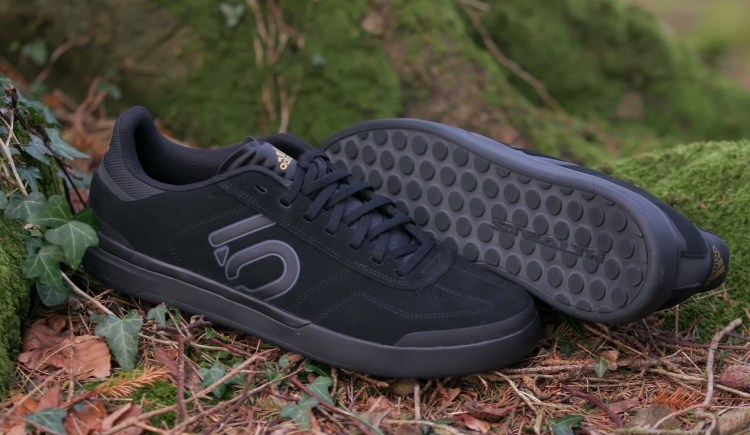
If you ride casually and you’re cycling short distances, a flat rubber pedal works fine. This is the standard bicycle pedal that has a flat surface and is compatible with any kind of shoe. If you use clipless shoes on flat pedals, they probably won’t offer you as good a grip as wearing flat-soled rubber shoes.
It is often quite difficult to tell the difference between shoes made specifically for flat pedals from standard shoes. They do, however, usually have a tough, quite rigid sole to help keep your feet steady and in the best position for energy transfer. Grippy outsoles help your feet to stay in position on the pedals.
Five Ten has become a dominant brand for these flat shoes and although they are fairly costly, the sole is stiff enough for riding, sticks to the pedals very well and has enough flex for walking.
As a beginner rider, you can wear flat shoes to give you a chance to focus on fundamental techniques without having to worry about clipping in and out of pedals or ending up on the ground when you can’t free your feet in time. It takes practice to become accustomed to riding with clipless shoes and pedals.
What are clipless shoes?
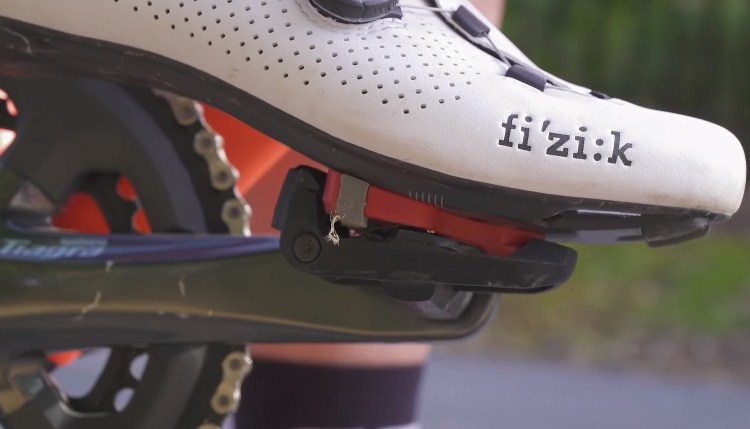
Clipless shoes use a cleat attached to the sole to clip into your pedals. They may take a bit of getting used to but they offer many advantages. They help you to make the most use of your energy as the foot-to-pedal connection is better.
You use your whole pedal stroke, including the upstroke. You have more control over your bike and can focus on your training without having to adjust your feet every few strokes of the pedal.
How do clipless shoes work?
The sole has a pattern of holes that accept specific cleats. Clip-in pedals are compatible with a specific pattern. All the parts must have the same pattern – typically 2-bolt or 3-bolt cleats – or they aren’t able to work together.
Shoes with 2-bolts are used for everything from mountain biking to gravel riding. You can walk easily in these shoes because the cleats are recessed. Shoes with 3-bolts have exposed cleats, so they are more difficult to walk in and are mostly used for racing and road riding.
A clipless system
If you cycle more seriously, where you ride, the distance you cover and your speed changes. There’s more risk of your feet slipping off the pedals and even if they don’t, you waste energy as they change position on the pedals. The ideal position is to have the balls of your feet on the center of the pedals.
Using a clipless system helps many riders to feel more confident and powerful on their bikes. A clipless system consists of the pedal, the cleat and the sole. When the system is engaged, your feet are connected to the pedals and won’t come off.
To get out, you swing your heels to the outside, and the pedals release. Because your feet are locked into the pedals, it gives you more power while accelerating and climbing and more control for maneuvers such as hopping obstacles if you’re riding off-road. You can get your feet in and out quickly with practice, so you can land safely if you need to dismount in a hurry.
The shoe you pick must be compatible with the pedal system your use. Most quality shoes work well with major pedal systems but you do get mismatches every now and then and you want to avoid those.
A final word
You want to wear shoes that will improve your cycling performance and keep you comfortable and safe no matter where you ride. Flat pedal shoes are fine for certain types of riding and grip better than clipless shoes on a flat pedal. If you’re cycling off-road, using a clipless system is the best way to keep your feet on the pedals when you’re flying downhill and dodging obstacles.
Are 8 and 9 Speed Cassettes the Same Width?
Bike component manufacturers come up with new components with new specifications every now and therefore, the market is full of various options.
A wide variety of products makes confuses you, especially when the manufacturers some parts aren’t compatible with other components of your bike. Whether you are a pro-level biker or a beginner, it becomes difficult to decide.
This is why cyclists need to know even the minor details of the bike’s components as it helps to maintain the bike nicely.
Same width, different spacing
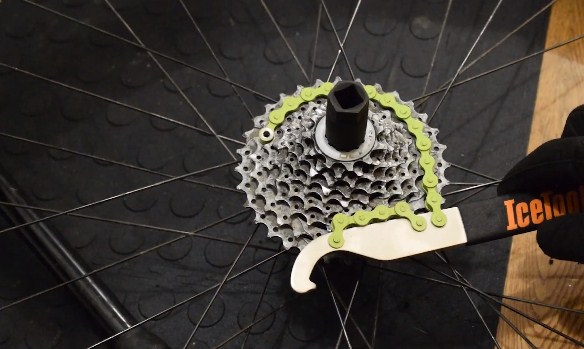
When it comes to bike parts, one of the most confusing things is cassettes, especially since these come with different speeds. Here are some details for you to know when you’re thinking about whether you should get an 8-speed or a 9-speed cassette for your bike:
- Both 8-speed and 9-speed have the same freehub width, while the 7-speed is a bit narrower.
- The spacing of gears of 8-speed and 9-speed differ.
- You need a spacer behind a 7-speed cassette for it to fit on an 8-speed or 9-speed freehub.
The cogs of these cassettes have the same width, although the spacing varies. This means that a 9-speed chain could work adequately with an 8-speed cassette.
This is also the reason why 9-speed chains aren’t very durable. The outer width is a bit narrower, while the inner width is the same. This means that the plates on the chain are a bit weaker and thinner.
Sometimes, the difference lies in the brand

Sometimes, the difference lies in the brand. For instance, the 8-speed cassettes of the Campagnolo and Shimana brands don’t have the same spacing. This means that it’s quite challenging to get good indexing when you use an 8-speed wheel from Campagnolo with a cassette from Shimano, and vice-versa.
For the Shimano brand, their 9-speed cassettes have an extra cog added to the 8-speed cassette, while the overall width remains the same. It has a reduced gap between the gears and as such, it requires a narrower chain. The same thing goes for the 10-speed where it still has the same width as an 8-speed cassette. This makes the 10-speed slightly narrower.
For the speed systems in the 7, 9, and 10, the sprocket spacing of different brands doesn’t differ significantly, so it doesn’t cause many difficulties when used. To ensure a perfect match, you can do the following:
- Substitute your spacers
- Use alternative cable routing
- Use a special pulley adaptor
Estimated widths of different bike components
The width of the cassette you need for your bike also depends upon its compatibility with the other parts. Depending on what you need, you may want to consider researching the specific cassette you plan to buy as the values might vary slightly. To give you some idea of the measurements of different bike components, here are some estimates:
- For Spacer Width: 8 Speed (3.00mm), 9 Speed (2.56mm)
- For Cog or Tooth Width: 8 Speed (1.8mm), 9 Speed (1.78mm)
- For Chain Width: 8 speed (7.1mm), 9 speed (6.6 to 6.8mm)
Other things to consider when looking for speed cassettes
Along with compatibility, you may also want to look into the dropout spacing at the rear. For example, if you have a 126mm bike, you should know that 8-speed and 9-speed need 130mm.
Additionally, if your bike has a frame made of aluminum, some people would warn you against the stress caused should you use a wider wheel. As such, you may need a new chain, new shifters, and maybe even a new derailleur on the rear.
Conclusion
The 8-speed and 9-speed, even the 10-speed cassettes can all fit in the same hub. This simply means that if your bike is an older model with 8 gears on the rear, you may opt for an 8, 9, or 10-speed without needing to change your bike’s rear wheel. The reverse way works too.
With this information on-hand, the next thing you may want to consider is the need, if any, and the compatibility when changing other components of your bike. Research everything that you need to know before starting to work on your bike for the purpose of maintenance. Do this to lessen your risk of facing issues.
Best Single Speed Crankset
As a cyclist, you should know that when switching to a single speed crankset, you can avoid a lot of mechanical issues. You shouldn’t skimp on this bike component for the main reason that it is your bike’s drivetrain.
A single speed crankset is a crucial component because it’s responsible for converting reciprocating motion into rotational motion, thus, allowing you to move your bike ahead. The crankset helps the single-speed belt or chain push the wheel at the rear.
When properly set up, your bike can accelerate quickly from a standstill position to 20mph in only a couple of pedal strokes. To guide you on choosing the best single crankset for your needs, this article offers you a buying guide along with a list of the best products on the market now.
What to Look Out for When Getting the Best Single Speed Crankset

With the many brands of single speed cranksets available in the market, it won’t be that difficult to find an affordable and trustworthy one. But there are certain features you should look out for to ensure that you get the best one for your preferences and needs. Here are some factors for you to consider when choosing this bike part:
Types
There are a few choices when it comes to crank types. The type you choose depends on your bike and the features you need in a single speed crankset.
- Square Taper
Design wise, the square taper is the most functional crank and it’s technically simple too. This is the most used type as almost all fixes have a cartridge bottom and a square taper crankset. This type if very popular because it’s easy to install and maintain.
- Integrated
If you prefer a more sophisticated look, you can go for this type. Another reason why you may choose this type over the square taper is to decrease weight. Integrated single speed cranksets are lighter, more durable, and cooler. These are sturdier because they have bigger external bearings.
- Track
Not all types of single speed cranksets work with all types of bikes. For instance, this type is primarily designed for track bikes and they offer superb speed and performance.
Tooth Count
Different cranksets can have different chaining tooth counts. Tooth count is the number of tiny teeth that the chain will hook-up on. This feature is a very important factor. Adding more teeth makes your bike more difficult to pedal while going uphill but it will go significantly faster on straight roads.
If you frequently ride on hilly terrains and steep inclines, it’s better for you to choose a smaller chainring with a low tooth count. For increased speed and flat areas, a higher tooth count performs better. The most common ratio is about 16 – 17 teeth on the rear cog and 42 – 44 teeth on the chainring in front.
Arm Length
As with the tooth count, there are also different cranks for different arm lengths. There are two main reasons why crank arm length matters. First, is your speed and the second reason has something to do with knee pain. A longer arm enables you to go faster while paddling with less effort. Although this makes gearing easier, you have to watch your pedal stroke.
With a shorter crank arm. you can ride at a faster cadence while reducing the risk of developing pedal stroke. On the downside, you reduce your power compared to longer arms. Shorter crank arms are also recommended if you experience knee pain. The length of the crank arm is one of the main culprits for recurring knee pain. The wrong length generally causes this.
Brand
When buying a single speed crankset, choose one with a reputable brand name so you don’t get disappointed. Today, there are so many manufacturers of bicycle parts, the majority of which are in Taiwan and China. There is nothing wrong with that as most bike parts come from those countries anyway.
The problem is that unknown brands typically cut corners on specifications – from using cheap quality materials, inconsistent or finished products or shoddy alignments. All of these factors add up to a likely scenario where the bike part you purchase ends up failing you.
Top 5 Single Speed Cranksets
#1. Retrospec Single-Speed Crankset

The Restrospec Single Speed Crankset is one of the best fixed gear cranksets and it comes in different colors. It’s perfect if you’re looking to build a fixie as you can save money without having to compromise anything. This is also the best crankset if you intend to upgrade the drivetrain of your road bike.
Any way you look at the Restrospec Single Speed Crankset, it’s an excellent choice since it combines steel chaining with a light crankset made of aluminum alloy. This combination makes the chainring more durable.
The crankset consists of parts pieces and it comes in three sizes – 46T, 48T, and 44T. This is a great feature as it gives you a wide range of options, thus, allowing you to select the best size to suit your riding style. The crank arm is 170mm in length making it suitable for most types of riders.
Pros
- Features an all-new design for the crank arm that’s much stronger.
- Lightweight and burly for superior reliability and strength.
- Comes in a wide range of colors (black, blue, chrome, lime green, orange, red, white, and yellow).
Cons
- Some issues because of the painted threads.
#2. CYSKY Single Speed Crankset

The CYSKY Single Speed Crankset is one of the most popular models among cyclists because of its superior quality. The manufacturer’s primary purpose for their product is to offer strength and durability. This product comes with everything that you need to ensure excellent output. Investing in this model might be your best decision for the year!
This crankset enables you to ride efficiently on any kind of road. Your bike will travel smoothly requiring only a minimum effort. The crankset alone can decrease the maintenance costs of your bike.
The CYSKY Single Speed Crankset is of aluminum alloy 7075-T6 making it denser but still lightweight enough to perform at its best. Aside from Single Speed bikes, you can also use this crankset for Fixed-Gear Bikes, Track Road Bikes, and more. It even comes with a cutting surface made of anodized CNC.
Pros
- Suitable for different types of bikes.
- Offers ultimate durability and strength because of the aluminum alloy material.
- It’s sleek, stylish, and offers superior performance.
Cons
- A couple of users have complained about the given measurements.
#3. SRAM S300 Courier Crankset

For a very reasonable price, the SRAM S300 Courier Crankset can be yours for the taking. Aside from offering high durability and superb performance, the crankset has a sleek presentation. It comes in a visually-appealing package. The threads of this crankset come greased but that’s the only one – which is an advantage.
Unlike some of the cranksets out there, you won’t find excess grease on any of its components. Moreover, it includes washers that fit the crankarms so you won’t have to dirty your arms when installing pedals. After installation, you can cycle for miles without worrying about visible wear on your bike’s crank. You won’t feel flex either. This shows how sturdy the crankset is.
Most of the SRAM S300 Courier Crankset’s parts are of plastic, except for the cups on the outside which are of aluminum. The bottom bracket and pedal threads don’t have rough edges. The spindles of this single speed crankset are also made of high-quality materials. It has a laser etching that is very clean and that stays on the face of the crank arms even after you use it for a long time.
Pros
- It’s well-engineered, balanced, and smooth.
- It’s lightweight and made of durable material to ensure a long life.
- Includes a bottom bracket.
Cons
- Not suitable if you plan to change your bike’s chainring.
#4. SHIMANO Altus M311 Single Speed Crankset

With the Shimano FC-M311 Bicycle Crankset, you will elevate your bike’s performance. It’s a highly functional product that has great compatibility with chaincase for maximum convenience. Additionally, the crankset also has compatibility with 7/8 speed. It requires a 123-mm bottom bracket, which you have to purchase separately.
The Shimano FC-M311 Bicycle Crankset is perfect for you if you’re looking for superior performance and ultimate convenience. The integrated design of the chainguard promotes convenience while enhancing the crankset’s overall performance. It’s even made of light yet high-quality materials so that it doesn’t add more weight to your bike.
Pros
- Features a chainguard integrated design for added convenience.
- Made with a lightweight construction so it won’t add to your bike’s weight.
- Comes in two colors (black and standard) to match the rest of your bike.
Cons
- Chainrings may warp after a particular time of use.
#5. Pro-Lite Single Speed Crankset

The Pro-Lite Single Speed Crankset comes with the drive side and both of the crank arms. The design of the crankset makes it compatible with the square-taper brackets at the bottom. This crankset has 53 teeth. The bottom bracket is not part of the package, although you can order this from the manufacturer’s website.
You need a 68-mm width for your single speed bike. As for the spindle length, that depends on what type of frame you use. The Pro-Lite Single Speed Crankset comes with a protective cover that fits for a single speed bike, a Fixie, a track road bicycle or a Dahon. This crankset weighs around 669g without the BB.
Pros
- The crankarm measures 170 mm with a 130 mm diameter bolt circle.
- A strong and reliable crankset that has good compatibility with different bikes.
- Made of a special aluminum allow that’s lightweight and durable.
Cons
- You need to install it carefully so you don’t bend it.
What is a single speed crankset?
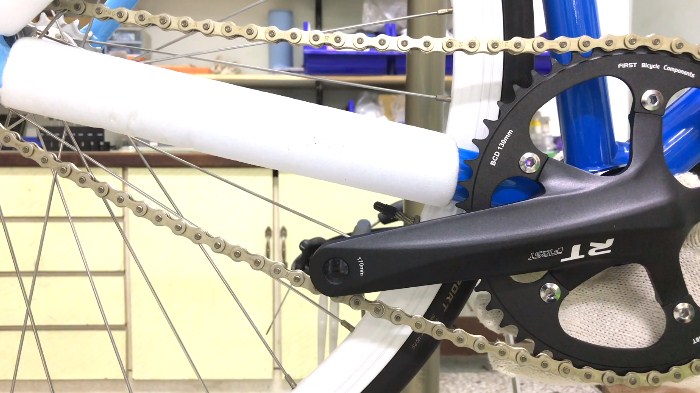
The crankset is a crucial component of a bike’s drivetrain. This component is responsible for converting reciprocating motion from your leg into a rotational motion. As such, it helps drive the belt or chain, which, in turn, drives the bike’s rear wheels. Unlike the older models, modern crankset products are more advanced and they come with additional features.
If you’re looking for a single speed crankset, opt for the modern models. The modern ones have bottom brackets to ensure maximum performance. Most are lightweight which means they do not add weight to your bicycle.
There are a wide variety of single speed cranksets on the market today for every type – square taper, integrated, and track. For you to choose the right crankset, it’s important for you to know what you want for your bike.
For instance, you can upgrade a square single speed crankset to an integrated single speed crankset. In such a case, you need to choose wisely by considering the important factors and carefully going through the specifications of different products.
The benefits of using a single-speed crankset
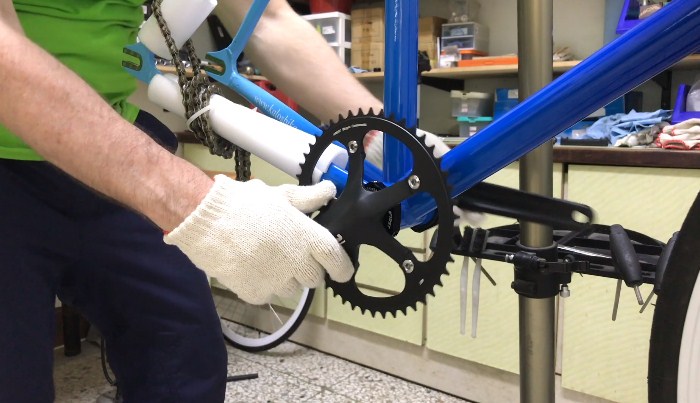
Shifting to a single speed crankset helps you avoid a number of mechanical issues with your bike. But this isn’t the only benefit of this essential component. Consider these other benefits that a single speed crankset has to offer:
- You won’t have to worry about shifters or derailleurs with a single speed crankset. Therefore, you can focus more on what matters most – riding your bike. This makes cycling a fun and simple experience – one that you can’t get with other types of cranksets.
- You won’t have to deal with frequent mechanical problems because single speed cranksets have fewer parts that move.
- They are much more affordable and lightweight.
- They have very low maintenance costs.
With all of these benefits, it’s no surprise that most cyclists, especially those who live in cities with flat roads prefer single speed bikes.
Verdict
The market today offers many brands of single speed cranksets. As a bike owner, you have to choose one carefully. Hopefully, this article helped you make a decision to buy the best single speed crankset based on the important factors. Then you can choose any of the products featured above.
The cranksets here were thoroughly compared and assessed. As such, choosing any of them would be a great buy. Moreover, the produces listed here come in varying sizes and colors giving you the option to customize your bike without much effort.
Best CO2 Inflator for Your Bikes
As a cyclist, you don’t want to get stranded somewhere because of a flat tire. In such a case, you can either walk home, hitchhike or call a friend to pick you up. You can avoid this kind of situation if you carried with you a CO2 inflator.
This is an affordable, lightweight, and small tool that pumps up flat tires with minimum effort. The quick release of air into the flat tire saves you precious time. Best of all, these devices aren’t that expensive. You don’t even have to be a professional cyclist to own one.
With a high-performance CO2 inflator, you can enhance the quality of your experience as it gives your bike the appropriate tire pressure. Read on to choose the best CO2 inflator out of the many products on the market.
What to Look Out for When Getting the Best CO2 Inflator

In the past, people only used a CO2 inflator because of its convenience. Today, however, it has become a very popular device for those who need quick inflation. If you decide to get rid of your pump and you need a space-saving, quick way to inflate your tires, here are the pointers for you to consider.
Canisters and Canister Wrappers
Although CO2 inflators mostly come in canisters, not all of them are the same. For one, some have threaded tips whereas others are very smooth. Either of these is okay. Just make sure you purchase compatible canisters.
When you opt for metal canisters, remember that they reach a freezing point as quickly as they discharge the gas. If you used these canisters with bare hands, your fingers might get stuck, which, in turn, causes severe discomfort.
To avoid this from happening, you can wear gloves. Better yet, put a sock over the canister while using it. This serves another purpose – it stops the metal bottle from rattling while you’re on the road. You may notice that in some CO2 inflators, part of the design ensures that the kit covers the canister completely.
Ease of Use

All CO2 inflators offer superb ease of use, especially during emergency cases. This ease avoids the loss or damage of cartridges because of poor connections which can be very costly. Before riding your bike, make sure that you know how your CO2 inflator works so that you can use it easily and quickly.
You don’t have to spend too much time figuring out how the pump works, especially when you’re cold, tired, and stranded. Often, these are the times when you’ll get a flat tire. This makes ease of use an important factor to consider.
Weight and Durability
If you take your CO2 inflator with you every time you go biking, it takes up crucial space in your pocket or bag. Additionally, you will also drag the extra weight down and up each hill.
With a small CO2 inflator, it becomes more convenient and easier because of its small size and affordable price. As for durability, just purchase a durable inflator – preferably one that’s built to last for years to come.
Pressure Tap or Lever

You may want to consider a CO2 inflator that comes with an off/on valve or a pressure tap that allows you to apply just enough pressure. This feature also means that you won’t have to waste a canister after each use.
Although this type of CO2 inflator is a bit more costly, it’s more economical in the long-run. With such a device, you can also add a little more air before fitting the tire, thus, reducing the risk of pinch punctures.
Top 5 CO2 Inflators
1. PRO BIKE TOOL CO2 Inflator

This PRO BIKE TOOL CO2 Inflator can inflate your tires in a matter of seconds with its 1-Turn Valve System. The control level operation regulates the release rate of carbon dioxide for inflation that’s controlled and precise. This device has a twin-valve head that threads into Schrader or Presta valves so you don’t need to switch valve heads.
Its compact size fits perfectly for keeping in a small bag or a pocket. The inflation head has compatibility with threaded cartridges of different sizes. There isn’t any danger in getting your fingers frozen when using it.
Although the PRO BIKE TOOL CO2 Inflator is a bit pricey, it’s more dependable than cheaper ones which inevitably fail, especially when you need them the most. Its superior quality ensures that you will have an enjoyable and safe ride.
Pros
- Includes a foam sleeve made of rubber EVA material to prevent leaks.
- Made of high-quality machined aluminum alloy material with precise and durable parts.
- Comes with a guarantee of a replacement or refund.
Cons
- In some cases, unscrewing the inflator attachment tends to unscrew the valve along with it.
2. Genuine Innovations G20315 CO2 Inflator

The Genuine Innovations G20315 CO2 Inflator uses an easy twist-to-inflate technology that offers easy, controllable, and quick carbon dioxide inflation. Simply thread a cartridge into the CO2 inflator, keep tightening it until you pierce the cartridge, press the nozzle into the valve, and twist the cartridge gently to release the gas inside the tire.
With this device, it only takes a few seconds to inflate your tire for you to ride your bike again. You can use the device with Schrader and Presta valves. Its construction is of a lightweight metal alloy with a compact design so you can carry it with you without it weighing you down.
The Genuine Innovations G20315 CO2 Inflator has a push-to-inflate technology that enables one-handed operation and controlled inflation. It even comes with its own threaded cartridges.
Pros
- Compatible with different threaded CO2 cartridges except for the 45g one.
- The only inflator that can fit inside aero and disc wheels.
- Includes a 20g threaded cartridge and has compatibility with Schrader and Presta valves.
Cons
- Some bikers report of inconsistencies with the product’s durability but then you don’t really expect it to last for years so not a major worry.
3. LEZYNE CO2 Inflator

The LEZYNE CO2 Inflator only works with threaded cartridges and it’s easy to use. Just tightly screw in the cartridge, screw the head into the valve, and push the head in to release the air.
You can also use this device on Schrader and Presta valves. It offers easy gas flow control and has a jacket for protecting hands from getting frozen when the canister is in use. It’s highly durable with its CNC-machined aluminum construction.
The LEZYNE CO2 Inflator has a Trigger Valve Operation that allows for more precise and easier controlled inflation. The head presses into the valve for quick engagement and it’s compatible with all threaded cartridges.
Pros
- Compatible with threaded CO2 cartridges.
- Compatible with Schrader and Presta valves.
- Has a sleeve made of Neoprene material to keep your hands from getting cold while you use it.
Cons
- Some minor issue with air leaks.
4. ULFR CO2 Inflator

When you carry the ULFR CO2 Inflator, you don’t have to worry about flat tires while on your way to the office or doing your daily ride. This handy kit includes a CO2 Inflator, an insulated sleeve, six tire repair patches, and a ball needle.
Should you have a flat tire, you can easily use the ULFR CO2 Inflator. Seal the 2-1 valve head completely into a Schrader or Presta tire valve, turn the lever in a counter-clockwise direction slowly up to 90 degrees until you reach the desired pressure level, then turn the lever in a clockwise direction back to the OFF position.
As a gesture of the manufacturer’s authenticity, they have included free tire patches and a convenient ball needle for you to use for different ball games. These are very handy items if you’re into sports too.
Pros
- Includes a ball needle and bonus patches too.
- A handy device that’s lightweight, compact, and highly efficient.
- Comes with a warranty that lasts for a lifetime.
Cons
- A minor issue of air leaking out while using has been reported by bikers.
5. Portland Design Works CO2 Inflator

The Portland Design Works CO2 Inflator Includes a 16g CO2 cartridge with a sleeve made of stitched leather to protect your hands and reduce the noise while you ride. The leather sleeve only comes in one color.
This device has compatibility with both Schrader and Presta valve types, as well as, threaded cartridges. The Portland Design Works CO2 Inflator features a control knob that allows you to regulate the speed of airflow for more precise results. It’s also made of highly durable alloy to ensure a longer life.
Pros
- Has a leather sleeve that’s dyed using natural waxes and oils.
- Made with a highly durable alloy construction.
- Comes with a lifetime warranty against product defects.
Cons
- Gave out a loud noise but it’s reported to have been taken care of by the manufacturer.
What is a CO2 Inflator?

A CO2 inflator is a portable and lightweight tire inflation equipment that you can use as an emergency device in case you get a low or flat tire while traveling. Generally, a CO2 inflator consists of two pieces – an inflator which is also referred to as a nozzle, and a CO2 cartridge that contains carbon dioxide gas.
The flow of air in some CO2 inflators can be manually controlled, thus, making it possible to block the flow of air. However, other models don’t have this feature. The CO2 cartridges for this device come in varying sizes including 12g, 16g, and 25g. The design of the smaller models allow them to fill tires up to 90 psi while the bigger ones can provide up to 120 psi.
The CO2 canisters for CO2 inflators come in either smooth or threaded types. When it’s time to use the inflator, you have to screw the adaptor head on the cartridge then direct the inflator onto the tire’s valve. For the threaded type, you have to twist the inflator onto the cartridge.
For the non-treaded type, you just have to push it down. Do these steps to quickly transfer pressurized CO2 from the cartridge to the tire. Using a CO2 inflator is a convenient inflation option but the cartridges are only for single use. You can use the inflator repeatedly and as such, you have to purchase one that’s highly durable.
The CO2 inflator is a convenient tool to carry because of its small, lightweight, and compact design. You can bring it with you when you go biking without having to affect its quality. You can get rid of the frame pump and buy yourself a highly efficient, and portable CO2 inflator.
How does a CO2 inflator work?

A CO2 inflator is a convenient device that helps inflate your tires in case of emergencies. Because of its size, it’s handy to carry inside your backpack, pouch or pocket. Moreover, this is more lightweight compared to frame pumps that are a lot bulkier.
Tire pressure has an effect on the quality of your ride and this makes the bike pump essential for every rider. However, the problem with bike pumps is that they weigh a lot and this feature can hamper your smooth ride.
The CO2 inflator effectively deals with this issue because of its aforementioned qualities. But before you purchase a CO2 inflator for yourself, you first have to know how it works.
There is a canister inside where the CO2 gets compressed. To transfer this CO2 from the cartridge to the tubes of the tire, you need an inflator or nozzle. Cartridges are for one-time use and this means that you must perform the transfer correctly on your first try.
Verdict
A CO2 inflator is a compact, lightweight, and portable tool that’s reliable and easy to use. While it’s true that you can only use the cartridges once, they are very useful to get you on the road again both quickly and effortlessly. If properly used, a CO2 inflator can guarantee a smooth ride after using it in a low or flat tire emergency. It truly is a must-have device for every biker.
If you decide to get yourself a CO2 inflator, you have to choose the best one. There are so many CO2 inflators in the market it can be a challenge to narrow down the choices.
The inflators we have presented here should provide you with some insight into what makes the best CO2 inflator. Make your choice. You can’t go wrong by choosing any of the options we have mentioned above.

